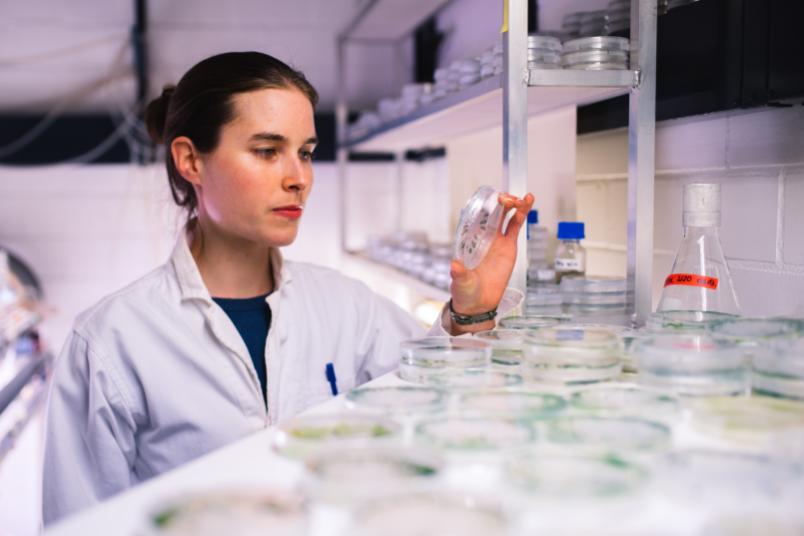
Hydrogen production This is how green algae assemble their enzymes
For almost a decade, researchers from Bochum have been developing biotechnological methods for hydrogen production. Green algae might be the key.
Researchers at Ruhr-Universität Bochum have analysed how green algae manufacture complex components of a hydrogen-producing enzyme. The enzyme, known as the hydrogenase, may be relevant for the biotechnological production of hydrogen.
To date, little is known about the way organisms form this type of hydrogenases under natural conditions. Using novel synthetic biology methods, the team around Dr Anne Sawyer, PhD student Yu Bai, assistant professor Dr Anja Hemschemeier and Prof Dr Thomas Happe from the Bochum-based research group Photobiotechnology, discovered that a specific protein machinery in the green algal chloroplasts is required for the production of a functional hydrogenase. The researchers published their findings in “The Plant Journal”.
Complex structure
The team worked with the single-cell alga Chlamydomonas reinhardtii. These organisms have a specific protein machinery in different regions of the cells that assembles enzymes – e.g. in the photosynthesis-conducting chloroplasts and in the cell fluid, i.e. the cytoplasm.
One enzyme that requires such assembly is the HYDA1 enzyme, which contains a complex cofactor, which is the area inside the enzyme where the actual hydrogen production takes place. The cofactor consists of a cluster of four iron and four sulphur atoms; a configuration frequently found in enzymes. What is unusual, however, is that a second cluster of two additional iron atoms binds to it for the hydrogen catalysis.
Special protein machinery necessary
Happe, Sawyer and their colleagues intended to identify the elements necessary for producing the cofactor in the living cell. They introduced hydrogenase precursors in different regions of the green algal cell, namely in the chloroplast and the cytoplasm. The protein machinery in the chloroplast was the only one capable of assembling a functioning hydrogenase. The machinery in the cytoplasm couldn’t produce the complex cofactor.
Bacterial enzyme in green algae
In a subsequent test, the researchers implanted the blueprint of a bacterial hydrogenase in the green algal genome. Chlamydomonas reinhardtii used it to produce a functional enzyme that efficiently generated hydrogen.
“Based on these findings, we can develop biotechnological methods, in order to achieve efficient hydrogen production in green algae,” says Happe. “We now know that the machinery that assembles enzymes in the chloroplasts is unique and irreplaceable.”